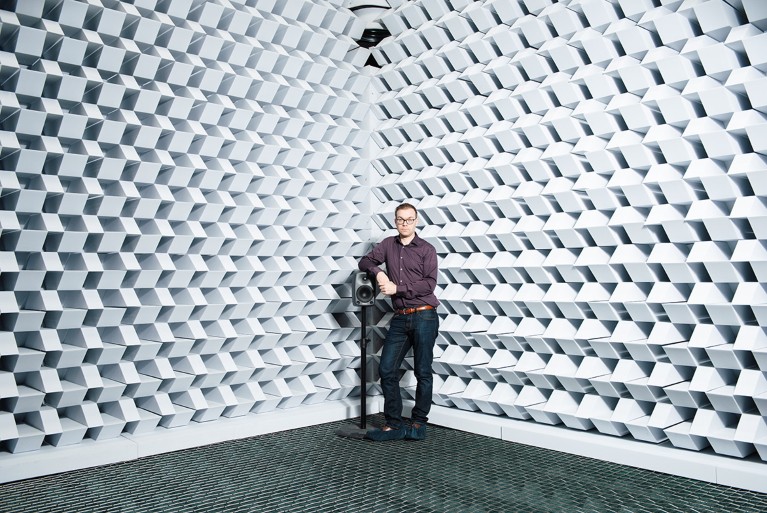As an acoustician with the Helsinki-based consultancy Akukon, I design and test the sound characteristics of various spaces, from performance venues to research laboratories.
This year, I was part of a project to completely renovate the acoustic labs of Aalto University in Espoo, Finland. The room in this picture is an anechoic space: it’s designed so that no surface reflects sound. Hard foam wedges cover the walls to absorb any incident sound; the room itself is a box within a box, with the inner space floating on elastic materials for vibration isolation.
On the decibel scale, 0 dB is the lower limit of human hearing. After the renovation, we measured the background sound level in this space to be −2 dB — the limit of our measurement devices — but our calculations suggest that the actual background noise could be as quiet as −10 dB.
When I was a postdoc at Aalto, we reproduced in these labs the acoustic characteristics that we had measured in concert halls across central Europe. We could ‘transport’ listeners in the lab between various halls while keeping everything else constant, from the musical performance to the mood of the listener. It enabled us to directly compare the spaces and identify the main ingredients of good room acoustics.
Some of the acoustic designs that I have worked on at Akukon derive from this project. We helped to design a club-type music venue, G Livelab in Helsinki, in which sound engineers use a virtual acoustic system to simulate different halls. The timbre of the sound and how big the space seems to be can be pretty freely adjusted, so the room suits everything from rock bands to string quartets.
Right now I’m working mainly from home, but I can still make site visits to take acoustic measurements. When society eventually reopens, I will be interested to see whether the general appreciation of concerts and similar gatherings has grown over this extraordinary period.


 Modelling Mars in a sandbox
Modelling Mars in a sandbox
 Engineering a dream workspace
Engineering a dream workspace
 Essay competition 1st prize: Beethoven’s dream
Essay competition 1st prize: Beethoven’s dream








